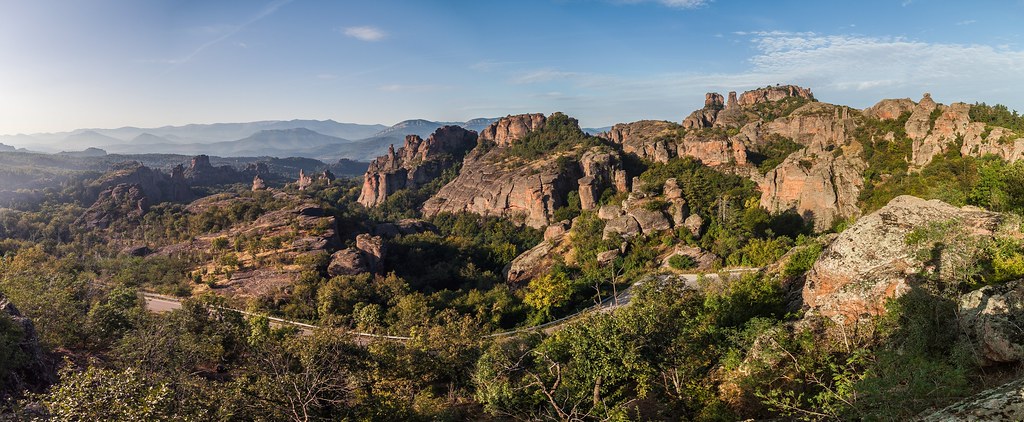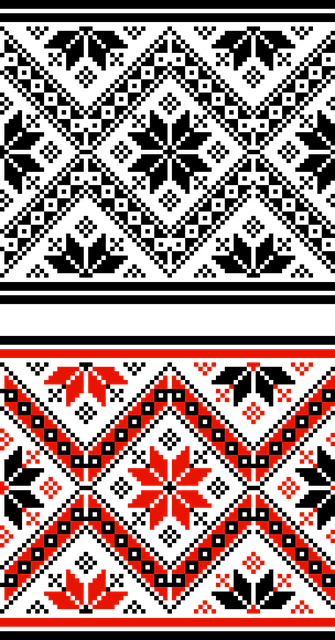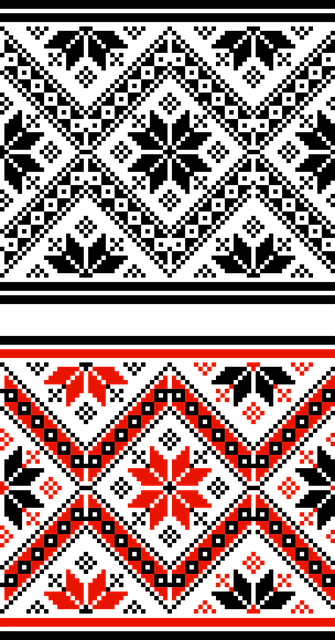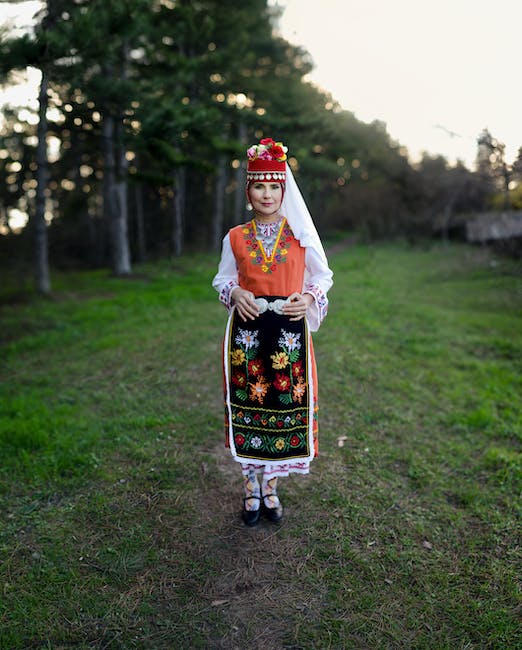Enter the enchanting world of Bulgarian traditional clothing, where fashion meets the deep-rooted symbolism of a proud nation. Amidst the vibrant tapestry of colors, intricate patterns, and rich textures, lies an intricate heritage that speaks volumes about Bulgaria’s cultural identity. From the mystical Rhodope Mountains to the bustling streets of Sofia, this article unveils the resplendent journey of Bulgarian traditional clothing, exploring its profound symbolism while celebrating its timeless elegance. Embark on this sartorial odyssey, where fashion becomes a tangible reflection of a people’s history, values, and aspirations.
Bulgarian Traditional Clothing: A Kaleidoscope of Colors and Patterns
Bulgarian traditional clothing captures the essence of the country’s rich cultural heritage, acting as both a fashion statement and a symbol of identity. The kaleidoscope of colors and patterns adorning these garments reflects the vibrancy and diversity of Bulgarian traditions, from the intricate embroidery to the bold motifs.
One significant aspect of traditional Bulgarian attire is its ability to convey symbolic meanings. Each region within Bulgaria boasts its unique designs and decorations, allowing attire to represent local craftsmanship and the wearer’s connection to their ancestral roots. The use of colors plays a vital role, with red symbolizing love, passion, and fertility, and black representing wisdom and strength. Patterns vary from intricate floral motifs representing growth and beauty to geometric shapes embodying protection and harmony.
- Rich Colors: Bulgarian traditional clothing features a vivid color palette, with reds, yellows, blues, and greens dominating the garments.
- Embroidery: Elaborate embroidery techniques showcase Bulgaria’s centuries-old tradition of skilled craftsmanship.
- Distinctive Motifs: Each region features its distinct motifs, telling a story of cultural heritage and unique customs.
- A Celebration of Identity: Donning traditional Bulgarian clothing serves as a celebration of cultural identity and a way of connecting with the country’s ancient roots.
Whether worn on festive occasions or as a display of national pride, Bulgarian traditional clothing is a testament to the country’s rich history and the importance placed on preserving cultural traditions.

Bulgarian Embroidery: A Rich Tapestry of Tradition and Symbolism
Bulgarian traditional clothing is not just about fashion; it is a vibrant tapestry deeply woven with cultural symbolism. Each intricate stitch and carefully chosen color scheme tells a story that reflects the unique identity of the Bulgarian people. For centuries, Bulgarian embroidery has been an art form passed down from generation to generation, preserving the country’s rich heritage.
One of the most iconic symbols found in Bulgarian traditional clothing is the wild rose. This delicate flower represents beauty, purity, and love, and is often embroidered on blouses, aprons, and headpieces. Another powerful symbol is the caftan, a long, flowing outer coat adorned with intricate patterns. The caftan signifies protection and strength and is traditionally worn by both men and women during festive occasions. Bold geometric motifs, such as diamonds and zigzags, are also prevalent in Bulgarian embroidery, symbolizing prosperity and warding off evil spirits.

Bulgarian Costume: Unveiling Cultural Heritage Through Fashion
An integral part of Bulgarian culture, traditional clothing not only reflects the rich history and heritage of the nation but also serves as a symbolic representation of its diverse regions and customs. Bulgarian traditional clothing, with its vibrant colors and intricate designs, offers a fascinating glimpse into the past and allows us to delve into the stories and traditions of centuries past.
Each region in Bulgaria has its own distinct style of clothing, characterized by unique motifs, fabrics, and accessories. From the embroidered shirts and hand-woven aprons worn in Northern Bulgaria to the exquisite bridal costumes adorned with golden threads in the Rhodope Mountains, the diversity of Bulgarian traditional clothing is a testament to the country’s rich cultural tapestry.
- The embroidered shirts, known as rukavitsi, represent the pride and craftsmanship of Bulgarian women, who painstakingly stitch intricate patterns and symbols onto the fabric.
- The cedrac, a type of apron worn by married women in the Rodopi region, features vibrant colors and complex patterns that reflect the woman’s status and role within the community.
- The dziangari, a traditional headdress worn by women in the Strandzha region, is an embodiment of elegance and grace, with its elaborate embroidery and delicate lace.
Bulgarian traditional clothing goes beyond mere fashion – it is a form of cultural expression and a way to celebrate the nation’s history and heritage. By donning these beautiful garments, Bulgarians proudly pay homage to their ancestors and keep their traditions alive.

Tips to Incorporate Bulgarian Traditional Clothing in Modern Fashion
Bulgarian traditional clothing is not only a representation of the country’s rich history and culture, but it can also be seamlessly incorporated into modern fashion. By combining elements of traditional garments with contemporary styles, you can create unique and eye-catching looks that pay homage to Bulgarian heritage. Here are some tips on how to embrace Bulgarian traditional clothing in your modern wardrobe:
1. Mix and match: Don’t be afraid to blend traditional Bulgarian pieces with modern clothing items. Pair a traditional embroidered blouse with a pair of jeans or a skirt for a chic and eclectic look. Mixing textures and patterns can create a visually striking outfit that showcases the beauty of both the traditional and the contemporary.
2. Accessorize with traditional elements: Incorporate Bulgarian symbols and motifs into your accessories to add a touch of authenticity to your outfit. Consider incorporating traditional jewelry, such as intricate silver necklaces or bracelets adorned with traditional Bulgarian symbols. Additionally, you can incorporate traditional textiles, like hand-woven belts or bags, into your accessories collection for an added touch of Bulgarian flair.
In Summary
In a world of ever-changing fashion trends, Bulgarian traditional clothing stands as a timeless testament to the rich history and cultural heritage of this enchanting Balkan country. The intricate designs and vibrant colors woven into each garment tell stories that span generations, bringing to life the vibrant tapestry of Bulgarian identity.
With threads as delicate as spider silk and patterns as intricate as a labyrinth, these traditional garments are more than just fashion pieces – they are symbols of pride and resilience. Passed down from one generation to another, they serve as a tangible connection to the past, a way of preserving the traditions and values that define the Bulgarian spirit.
Each region in Bulgaria boasts its own unique style of traditional clothing, with distinct patterns and ornaments that reflect the local customs, beliefs, and folklore. From the magnificent embroidery adorning a bride’s wedding dress in the Rhodope Mountains to the elegantly woven tapestry of a traditional shirt in the Rila Mountains, these garments encapsulate the essence of Bulgarian culture.
As with any traditional attire, the symbolism behind the clothing is deeply rooted in the daily lives of the Bulgarian people. The intricate motifs woven into the fabric often depict elements of nature, mythological creatures, or religious symbols, serving as a visual language that transcends words. They tell stories of abundance and fertility, protection against evil spirits, and acts of faith and devotion.
But Bulgarian traditional clothing is not merely a historical relic or a tourist attraction. It has found its way onto contemporary runways, inspiring designers around the world with its unique blend of tradition and modernity. The vibrant colors, bold patterns, and intricate craftsmanship have captivated the imaginations of fashionistas seeking to infuse their wardrobes with a touch of Bulgarian magic. In a world that often prioritizes fleeting trends, Bulgarian traditional clothing reminds us of the power that lies within a timeless piece that celebrates culture and individuality.
So, whether you stumble upon a traditional Bulgarian garment in a museum or have the privilege of witnessing its grace during a folk festival, take a moment to marvel at its beauty and acknowledge the stories it carries. By embracing this vibrant world of colors, patterns, and symbolism, we can honor the resilience and cultural richness of the Bulgarian people, ensuring that the legacy of their traditional clothing lives on for generations to come.

